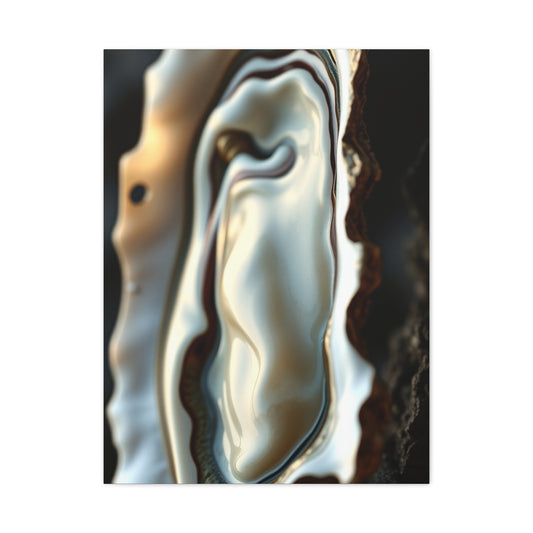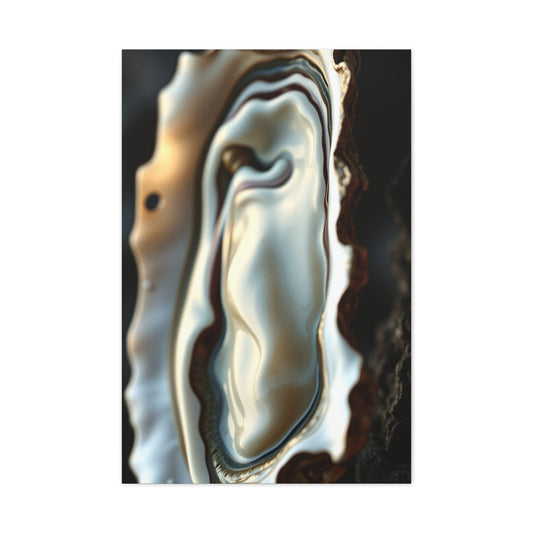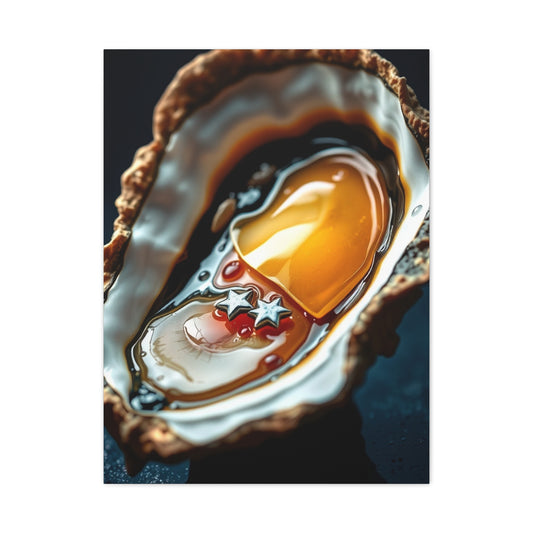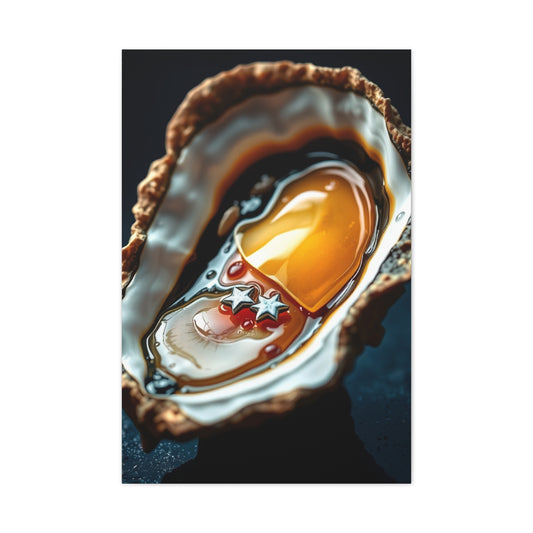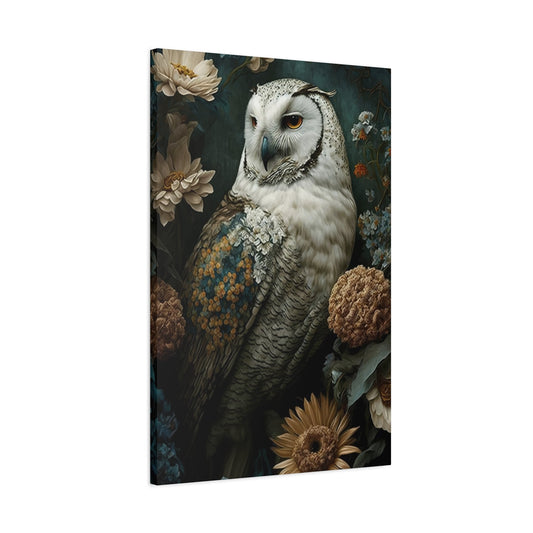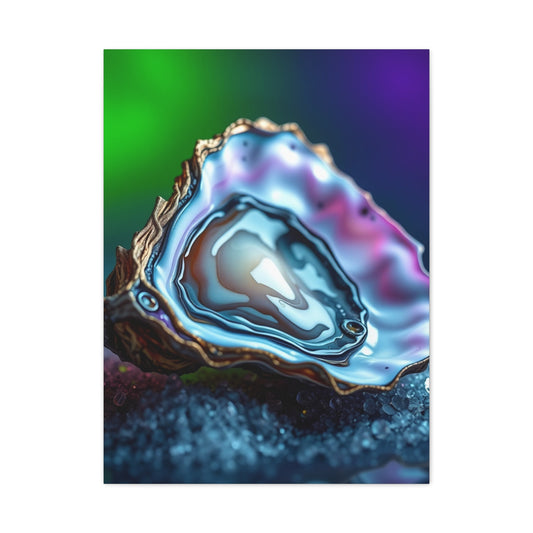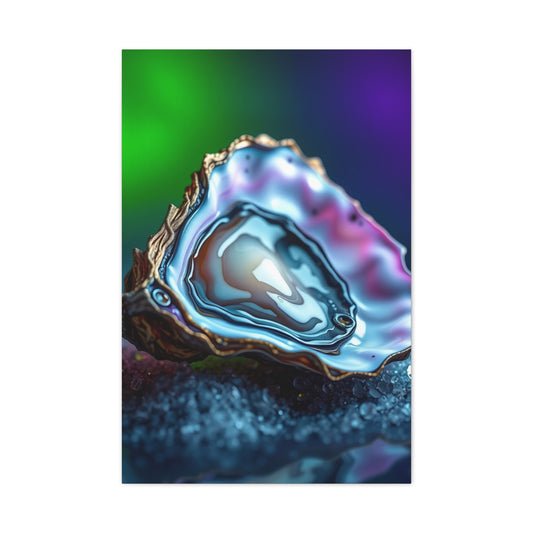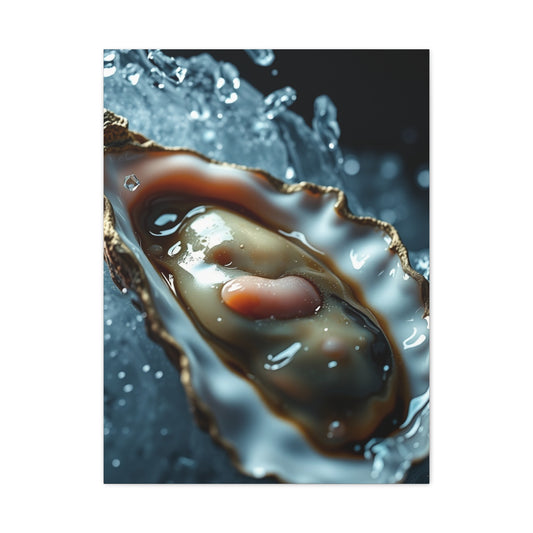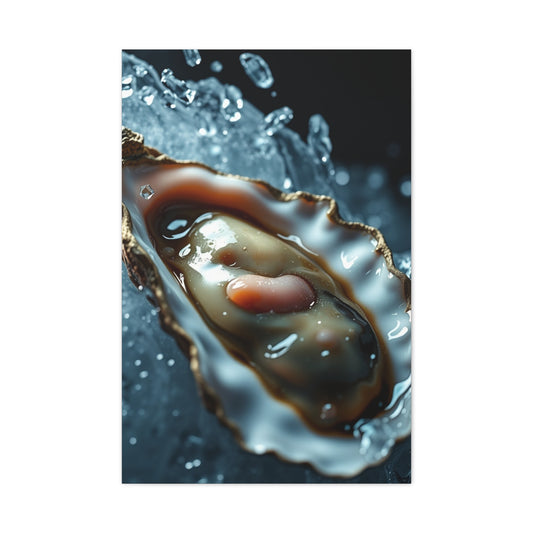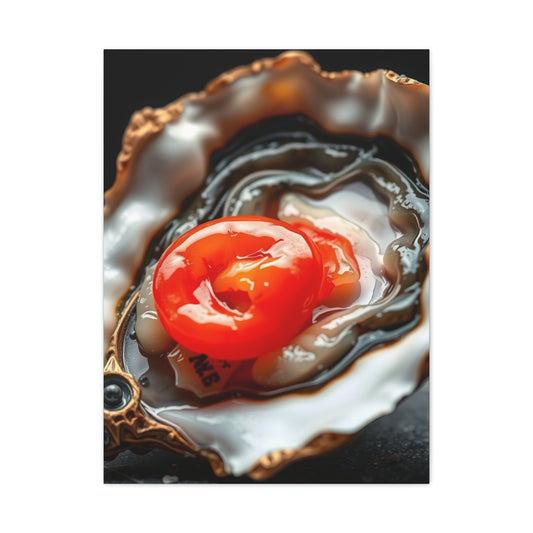The charm of flowers has always been an intrinsic part of home decor, symbolizing elegance, life, and vibrancy. Yet, while natural flowers bring fleeting beauty, their limitations in terms of durability and maintenance often leave homeowners searching for alternatives that provide the same aesthetic appeal without the constant upkeep. This is where Plaster of Paris (POP) flower designs step in, blending creativity, artistry, and functionality in a way that transforms interiors with timeless beauty.
POP flower designs are an artistic approach to home decoration where the medium—Plaster of Paris—is used to craft delicate, realistic floral patterns. These designs are far more than mere embellishments; they are expressions of creativity that can define the character of a room. Each POP flower, whether it graces a ceiling, a wall, or a corner of a room, is meticulously designed to capture the intricate beauty of natural flowers while offering the durability and flexibility that real flowers cannot provide.
The process begins with a skilled understanding of the medium. Plaster of Paris, composed of fine gypsum powder, becomes malleable when mixed with water, allowing artisans to shape and sculpt every petal, leaf, and blossom with precision. The flexibility of POP enables designers to create flowers of varying sizes, styles, and textures. Some designs may feature bold, oversized flowers that serve as statement pieces, while others employ subtle, delicate motifs that add a hint of refinement without overwhelming the space.
Customisation is one of the most compelling aspects of POP flower designs. Homeowners can select the type of flowers they prefer, the arrangement styles, and the colour palettes that complement their interiors. For example, a living room with neutral tones might benefit from white or pastel-colored POP flowers to maintain harmony, whereas a dining area could be adorned with vibrant, bold hues to create energy and visual interest. Unlike natural flowers, which are restricted by seasons and availability, POP designs offer limitless possibilities in form, colour, and style.
Another key advantage lies in their versatility. POP flowers can be seamlessly integrated into various elements of home decor. Ceiling medallions, intricate wall panels, decorative corners, and even furniture embellishments can all feature floral motifs, turning otherwise ordinary surfaces into focal points of artistry. In spaces such as bedrooms and living rooms, subtle POP flower patterns can evoke a sense of calm and sophistication, while grander designs in entryways or halls can make a dramatic, welcoming impression. This versatility ensures that no matter the size or function of a room, POP flower designs can elevate its overall aesthetic appeal.
The appeal of these designs is not merely aesthetic. Their low-maintenance nature makes them particularly suited for modern lifestyles. Unlike real flowers, which require regular watering, trimming, and replacement, POP flowers maintain their beauty with minimal care. Simple dusting or gentle cleaning is sufficient to keep them looking fresh and vibrant for years. Their durability also means that they resist fading, cracking, or wilting, preserving their visual impact over extended periods. This combination of longevity and low upkeep makes POP flower designs a practical yet luxurious addition to any home.
Furthermore, the tactile qualities of POP enhance the sensory experience of interior spaces. The smooth, sculpted surfaces of petals and leaves catch light in ways that add depth and dimension, creating subtle shadows and highlights that make the designs appear more lifelike. The interplay of light and shadow across a ceiling or wall installation can change throughout the day, adding dynamic interest to the space. These qualities make POP flower designs particularly effective in areas where visual appeal is a priority, such as living rooms, dining spaces, and reception areas.
The environmental aspect of POP flowers is another consideration. Unlike artificial flowers made from plastics or other non-biodegradable materials, POP is a naturally derived material that is safer for indoor use and more environmentally conscious. By choosing POP flower designs, homeowners can achieve the aesthetic benefits of floral decor without contributing to environmental degradation. Moreover, the longevity of POP designs reduces the need for frequent replacements, minimizing waste and making it a sustainable choice for long-term home decoration.
Beyond individual rooms, POP flower designs can unify the decor of an entire home. By using consistent floral motifs, patterns, or colour themes across different spaces, homeowners can create a cohesive visual narrative. For instance, a subtle pastel floral design in the bedroom can echo the pattern used in the living room ceiling, tying the spaces together without making them feel monotonous. This design harmony enhances the overall flow of a home, making it feel thoughtfully curated and inviting.
Artisanship plays a crucial role in the impact of POP flower designs. Skilled craftsmen bring imagination and expertise to every project, ensuring that the flowers are not only visually stunning but also structurally sound. Each petal is carefully shaped, each leaf meticulously positioned, and the overall composition is designed to achieve balance and symmetry. This level of detail transforms POP flowers from simple decorative elements into works of art that can rival natural floral arrangements in both beauty and emotional resonance.
Colour selection also enhances the versatility of POP flower designs. Depending on the desired effect, colours can range from soft neutrals that blend with existing decor to vibrant tones that create focal points. Techniques such as gradient shading, layering, and subtle texturing allow the designs to mimic the natural variations found in real flowers. This attention to colour and detail ensures that the POP flowers do not appear flat or artificial but instead convey a sense of vitality and movement.
For homeowners who value personalization, POP flower designs offer endless creative opportunities. Each design can be tailored to reflect personal tastes, cultural motifs, or thematic inspirations. A traditional home might incorporate classic floral motifs inspired by heritage patterns, while a contemporary space may feature abstract or geometric interpretations of flowers. The ability to customize designs ensures that every installation is unique, reflecting both the home’s style and the personality of its inhabitants.
In addition to decorative purposes, POP flower designs can subtly influence the atmosphere and mood of a space. Flowers have long been associated with emotions such as joy, tranquility, and rejuvenation. By incorporating floral motifs into interiors, homeowners can create spaces that evoke positive feelings and a sense of harmony. For example, soft, curved floral patterns can introduce calmness into a bedroom, while bold, expansive designs in a living area can energize the room and foster social interaction.
Technological advancements in POP molding techniques have further expanded the possibilities for home decor. Modern tools and methods allow for more intricate and precise designs, ensuring that every petal, vein, and curve is faithfully rendered. Innovations in colour application and protective coatings enhance durability and maintain the vibrancy of the flowers over time. These developments mean that homeowners can now enjoy high-quality, intricate floral designs that are both beautiful and long-lasting.
Ultimately, POP flower designs bridge the gap between art and function. They provide a sustainable, low-maintenance alternative to natural flowers while offering unparalleled creative freedom. Their versatility in placement, customisation options, and aesthetic impact makes them suitable for a wide range of interior styles and spaces. Whether used sparingly as accent pieces or boldly as statement installations, POP flowers have the power to transform homes, infusing them with elegance, sophistication, and a touch of nature-inspired charm.
The transformative power of POP flower designs is most evident when they are thoughtfully integrated into living spaces. Unlike conventional decorative elements, POP flowers offer a blend of artistry and adaptability, allowing them to complement various interior styles—from modern minimalist homes to classic, traditional interiors. Understanding how to strategically place these floral designs can amplify their aesthetic impact and create a harmonious atmosphere in every room.
One of the most popular areas to incorporate POP flower designs is the ceiling. Ceiling floral installations provide a dramatic yet elegant visual statement, drawing the eye upward and adding a sense of grandeur to a room. They are particularly effective in living rooms, dining areas, or entryways, where their presence can instantly elevate the perceived sophistication of the space. Ceilings offer a large canvas, allowing for expansive designs that range from central medallions to interconnected floral patterns that stretch across the entire surface. When combined with ambient lighting, such as recessed or spotlighting, these designs cast subtle shadows that accentuate depth, creating a dynamic interplay of light and texture.
Walls are another versatile canvas for POP flower designs. Floral motifs on walls can function as feature elements that enhance the room’s character without overwhelming the overall decor. Vertical arrangements, for instance, can visually elongate walls, making rooms appear taller and more spacious. Horizontal floral bands or patterns can unify different elements of a room, such as aligning with shelving units, headboards, or window frames, thereby creating a cohesive and balanced design. POP flowers can also be used to frame key architectural features like archways or alcoves, subtly highlighting these areas while adding a delicate, artistic touch.
Small spaces, such as bedrooms or study corners, benefit from POP flower designs that are understated yet impactful. Rather than large, elaborate installations, smaller clusters or single floral accents can introduce charm without overpowering the room. For instance, a bedside wall panel adorned with subtle floral motifs can create a calming and visually appealing atmosphere, while a single flower sculpture on a study shelf can bring an element of creativity and inspiration. The flexibility of POP allows designers to tailor each piece to the scale of the space, ensuring that even the smallest rooms can showcase elegance and artistic detail.
Beyond walls and ceilings, POP flower designs can enhance furniture and decorative elements. Tabletops, cabinets, and even headboards can feature subtle floral embossing or sculpted motifs, blending functionality with artistry. A dining table adorned with POP flower centerpieces, for example, can become a focal point of the room, drawing attention without requiring additional decor. Similarly, shelves and side tables can incorporate small POP floral designs to harmonize with larger wall or ceiling installations, creating a layered and cohesive interior aesthetic.
Color coordination plays a crucial role in integrating POP flower designs into a home’s decor. The palette of floral designs should complement the existing tones in the room, ensuring a balanced visual impact. Soft, pastel shades often work well in bedrooms and lounges, where a tranquil, soothing ambiance is desired. Brighter, bolder colors can be used in living rooms or entertainment areas to energize the space and create a lively, inviting atmosphere. For those who prefer neutral decor, white or off-white POP flowers offer a timeless elegance, subtly enhancing the room’s texture without adding visual clutter. Additionally, metallic accents such as gold or silver detailing can introduce a touch of luxury and sophistication, particularly when applied to central medallions or large wall installations.
Thematic placement is another effective approach. Floral designs can echo natural motifs found elsewhere in the home, such as indoor plants, garden views, or botanical art. This creates a sense of continuity and strengthens the overall aesthetic narrative. For instance, a living room with a view of a lush garden can incorporate POP flowers in complementary colors and styles, blurring the boundaries between indoor and outdoor environments. Similarly, a bedroom featuring botanical prints or nature-inspired textiles can benefit from POP floral accents on walls or ceilings, creating a unified theme that enhances the immersive experience of the room.
Lighting integration is essential to maximize the visual impact of POP flower designs. The interplay of light and shadow enhances the three-dimensional qualities of these sculpted motifs, giving them a lifelike appearance. Ambient lighting, such as soft LED strips or wall sconces, can highlight subtle details, while focused spotlights can draw attention to intricate patterns or central medallions. Natural light also plays an important role; placing POP floral installations where sunlight falls gently on their surfaces can accentuate textures and colors, creating dynamic visual effects throughout the day. Thoughtful lighting design ensures that POP flowers remain a central feature of the room, continuously drawing admiration and adding depth to the space.
Another consideration is the combination of POP flower designs with other interior elements. These designs complement a variety of materials, including wood, glass, metal, and fabric. For example, wooden panels with carved floral POP designs can provide a warm, traditional feel, while glass partitions adorned with delicate POP flowers introduce a sense of modernity and transparency. Upholstery and cushions can incorporate similar floral motifs in fabric or embroidery, linking decorative accents with architectural installations. This interplay between materials, textures, and motifs enriches the visual narrative, making interiors appear thoughtfully curated and aesthetically harmonious.
POP flower designs also offer opportunities for seasonal or thematic variation. Unlike permanent architectural elements, smaller POP installations can be refreshed or reimagined to suit changing interior themes or seasonal decor. Homeowners might choose to rotate colors, styles, or arrangements periodically, introducing subtle variation without compromising the overall cohesion of the design. This adaptability makes POP flower designs a versatile choice for homeowners who enjoy evolving their interiors according to trends, festivities, or personal preferences.
Spatial awareness is crucial when placing POP flower designs. Large, intricate designs require careful planning to avoid overwhelming the room, especially in compact spaces. Designers often employ symmetry, repetition, or strategic spacing to create balance, ensuring that each floral element enhances the room rather than competing with other decor. In larger rooms, designers can use POP flowers to delineate zones, such as seating areas, dining sections, or entryways, providing visual structure while maintaining aesthetic appeal. Even in irregularly shaped rooms, POP flower designs can create focal points that draw the eye and add cohesion to otherwise challenging layouts.
The artistry of POP flowers is also evident in the level of detail achievable through modern molding techniques. Fine veins on petals, subtle curvature of leaves, and layered petal structures can all be replicated with precision, giving each installation a realistic, almost lifelike quality. The ability to create three-dimensional depth ensures that the flowers do not appear flat or artificial. Instead, they engage the viewer, inviting closer inspection and appreciation of the craftsmanship involved. This attention to detail elevates POP flower designs from simple decorative motifs to artistic statements that enhance the sophistication of any interior.
For contemporary interiors, abstract interpretations of flowers offer another design dimension. POP flowers can be stylized, featuring geometric patterns or minimalist shapes that harmonize with modern furniture and decor. This approach allows homeowners to enjoy the aesthetic appeal of floral motifs without adhering to conventional realism. By blending abstraction with texture and color, these designs provide visual intrigue and a modern edge, proving that POP flower art is not limited to traditional or classic styles.
Moreover, POP flower designs are an effective tool for creating focal points in open-concept interiors. In spaces where rooms flow into one another, floral installations can help define areas, add depth, and maintain visual interest. For instance, a ceiling medallion above a dining table can establish the dining area within an open-plan living room, while wall-mounted POP flowers can subtly delineate seating zones or passageways. This use of floral motifs enhances the spatial organization of the home while contributing to its artistic narrative.
Ultimately, the successful integration of POP flower designs hinges on a combination of creativity, balance, and functionality. These installations should complement the architecture, furniture, and color schemes of the room, adding elegance without overpowering the space. Whether applied as grand ceiling medallions, intricate wall panels, or subtle furniture accents, POP flowers offer limitless possibilities for enhancing interiors with artful detail, color, and texture.
POP flower designs have evolved far beyond traditional floral patterns, emerging as a versatile tool for homeowners and interior enthusiasts to express creativity, personality, and style. These sculpted floral motifs not only enhance the visual appeal of a space but also allow for artistic expression, seasonal adaptability, and innovative styling that complements both contemporary and classic interiors. Understanding the latest trends and exploring imaginative applications can unlock the full potential of POP flowers, transforming every corner of a home into a showcase of elegance and design sophistication.
One of the prominent trends in POP flower design is the integration of seasonal motifs. Just as the natural world changes with each season, interior decor can reflect similar shifts in mood, color, and theme. Spring-inspired designs, for instance, often feature delicate blossoms in pastel hues such as soft pinks, lilacs, and creams. These gentle shades create a light and airy atmosphere, making rooms feel refreshing and uplifting. During summer, vibrant tones like sunny yellows, coral oranges, and lively reds can energize spaces, providing a cheerful and dynamic ambiance. Autumnal POP flowers, in shades of burnt sienna, amber, and deep maroon, evoke warmth and coziness, while winter designs often favor cool tones, metallic accents, or minimalist white patterns that harmonize with the serene, calm environment of the season. This seasonal adaptability allows homeowners to subtly alter the look and feel of a room, keeping interiors lively and contextually relevant throughout the year.
Another trend gaining popularity is the fusion of traditional and contemporary styles. POP flowers can be crafted to mimic classical motifs such as lotus blossoms, roses, or intricate vines, yet applied in modern arrangements, geometric patterns, or abstract placements. This blending of styles ensures that interiors maintain a sense of heritage and cultural richness while embracing contemporary design sensibilities. For example, a traditional floral medallion on the ceiling might be paired with sleek, minimalist furniture and neutral walls, resulting in a balanced, harmonious environment that pays homage to the past while remaining fresh and modern. Similarly, wall panels featuring stylized or abstract floral arrangements can complement cutting-edge interior trends, creating a statement of refined taste and creativity.
Customization remains a cornerstone of POP flower design, allowing homeowners to align decorative elements with personal aesthetics and lifestyle needs. Custom POP flowers can range from large statement pieces in living areas to subtle accents in intimate spaces like bedrooms, reading nooks, or home offices. Homeowners might choose oversized petals in a dining room to create a sense of drama and grandeur, or smaller, clustered flowers in corridors to add charm without overwhelming narrow spaces. The scale and proportion of each floral piece are carefully considered, ensuring harmony with furniture, lighting, and room dimensions. The freedom to choose color palettes, floral varieties, and arrangements makes POP flowers a highly versatile medium for personal expression.
Innovative applications of POP flower designs are increasingly being explored in multi-functional spaces. For example, open-plan homes benefit from the strategic use of floral motifs to delineate different areas without the need for partitions or heavy furniture. A central POP flower medallion on the ceiling can define a dining area within a larger living space, while wall-mounted floral panels can separate lounge zones from work or entertainment corners. Such creative usage not only adds aesthetic value but also enhances spatial organization, demonstrating how decorative artistry can influence functional aspects of interior design.
Color plays a pivotal role in maximizing the impact of POP flower installations. While naturalistic shades like soft pinks, creams, and greens are timeless and elegant, modern interiors increasingly experiment with bold, unconventional hues. Metallic finishes such as gold, silver, or bronze can introduce a luxurious, sophisticated touch, while pastel gradients and ombré effects create subtle depth and visual intrigue. For more avant-garde spaces, designers are even exploring monochromatic or contrasting color schemes, which can make floral motifs pop dramatically against neutral or dark backdrops. Thoughtful color choices ensure that POP flowers seamlessly blend with the overall palette of the room while simultaneously drawing attention as focal points of design.
Lighting integration is another key trend in enhancing POP flower aesthetics. Modern interiors often combine sculptural lighting with POP installations to create dramatic visual effects. Recessed ceiling lights, LED strips, or spotlights can highlight the textures and three-dimensional aspects of sculpted flowers, casting gentle shadows that enhance depth and realism. In wall panels, backlighting can create ethereal, floating effects that elevate the perception of space and artistry. The careful interplay of light and shadow not only accentuates the beauty of each floral piece but also transforms rooms by adding dynamic and ever-changing visual interest throughout the day.
POP flower designs are no longer limited to ceilings and walls; they are increasingly integrated into furniture and decorative elements. Sculpted floral motifs on headboards, cabinet doors, side tables, or even door panels can create subtle, cohesive connections across a room. For instance, a bedroom headboard adorned with sculpted petals can harmonize with ceiling floral designs or wall accents, creating a layered and immersive environment. In dining areas, small POP floral sculptures on tables or sideboards can add personality and elegance, transforming everyday functional furniture into curated works of art. The adaptability of POP ensures that homeowners can carry a consistent decorative theme throughout the home, enhancing both visual appeal and interior harmony.
In addition to residential interiors, POP flower designs are gaining traction in creative lifestyle spaces such as home studios, boutique offices, and art corners. The versatility of these floral installations allows them to blend seamlessly into spaces that demand both aesthetic appeal and inspiration. Art studios might use POP flowers to create visually stimulating backdrops, while home offices can benefit from subtle, calming floral accents that enhance concentration and well-being. The ability to scale designs, combine textures, and adapt colors makes POP flowers suitable for diverse environments, reflecting the growing trend of integrating art and functionality in everyday living spaces.
Another contemporary trend is the exploration of dimensional layering and mixed media. Designers are increasingly combining POP flowers with materials such as resin, glass, wood, or metal to produce multi-textured installations. This layering creates depth, movement, and richness, turning a simple wall or ceiling into a multidimensional artwork. For example, a combination of sculpted POP petals with a glass overlay or metallic highlights can give the impression of floating blooms, capturing attention and making the space visually engaging. Such innovative techniques expand the creative possibilities, allowing each installation to tell a unique design story.
Sustainability and eco-consciousness are becoming central considerations in modern home design, and POP flower designs offer a long-lasting, environmentally friendly alternative to real or artificial flowers. Unlike natural blooms, which wilt quickly and require frequent replacement, or plastic alternatives, which contribute to environmental degradation, POP flowers are durable, reusable, and require minimal maintenance. Their longevity reduces waste, while their non-toxic composition makes them safe for indoor environments. For environmentally conscious homeowners, this combination of sustainability and aesthetic appeal makes POP flowers an ideal choice for long-term decorative planning.
POP flower designs also encourage experimentation with pattern repetition and modular installations. Smaller floral motifs can be combined to create intricate murals or repeated in strategic intervals along walls and ceilings. This modular approach allows homeowners to scale designs according to room size and layout, ensuring balance without overcrowding. Repetition of patterns creates visual rhythm, enhancing the cohesion of interiors while adding a sense of structure and continuity. Modular floral units can also be rearranged or expanded over time, offering a dynamic approach to home decoration that adapts with evolving design preferences.
The tactile quality of POP flowers adds another layer of sophistication. Unlike flat wallpapers or painted motifs, the three-dimensional sculpting of petals, leaves, and stems provides sensory engagement, inviting closer inspection and interaction. This textural richness enhances the overall spatial experience, making interiors feel more immersive and thoughtfully designed. Whether viewed from a distance or examined up close, the intricate details of POP flower designs evoke admiration for the craftsmanship and artistic vision involved.
Ultimately, the continued popularity of POP flower designs is rooted in their ability to merge aesthetic beauty, functional versatility, and personal expression. They allow homeowners to transform interiors into curated galleries of art, where every installation contributes to the narrative of the home. The combination of seasonal adaptability, innovative placement, dimensional layering, and customizable features ensures that POP flowers remain relevant across styles, trends, and evolving personal tastes.
As home interiors evolve, the role of decorative elements such as POP flower designs becomes increasingly significant. Beyond their immediate aesthetic appeal, these sculpted floral motifs offer opportunities for innovation, customization, and long-term value, turning living spaces into artful expressions of personality and taste. In this concluding section, we explore advanced design strategies, practical integration methods, and tips for sustaining the beauty of POP flower designs over time, ensuring they continue to elevate interiors for years to come.
One advanced approach to POP flower design involves layering multiple elements to create depth and dimensionality. Rather than relying on a single layer of sculpted flowers, designers often combine various sizes and types of petals, leaves, and stems to achieve a more dynamic and realistic effect. Large blooms can serve as focal points, while smaller flowers and delicate accents fill the surrounding space, creating a sense of movement and visual complexity. This layering technique works particularly well in central ceiling medallions, feature walls, or large-scale installations in living rooms and hallways. The result is a rich, immersive environment where floral patterns seem to emerge naturally from the architecture.
Placement variety is another strategy for enhancing the visual impact of POP flowers. While traditional applications on ceilings and walls remain popular, contemporary designers are experimenting with unexpected locations to add surprise and intrigue. For instance, POP floral motifs can be incorporated into archways, staircases, door frames, or even window sills, transforming functional architectural elements into decorative focal points. In kitchens, subtle floral accents on cabinet panels or range hoods can add warmth and charm without overwhelming the space. Similarly, bathrooms benefit from water-resistant coatings applied to POP designs, allowing small floral arrangements to enhance mirrors, vanities, or tiled areas without compromising durability.
Customization remains central to creating distinctive interiors with POP flower designs. Color personalization allows homeowners to harmonize floral motifs with the overall room palette. Beyond simple pastel or neutral tones, modern techniques enable gradient effects, metallic finishes, and multi-colored arrangements, giving designers freedom to experiment with contrast, harmony, and thematic consistency. For example, a soft gradient from pale pink to deep rose can add depth and sophistication to a wall installation, while metallic gold or silver highlights on petals can introduce a luxurious, contemporary touch. By tailoring color schemes, each POP flower design becomes a reflection of the homeowner’s taste and complements the surrounding decor.
In addition to color, scale, and proportion are crucial considerations for achieving a balanced design. Large, intricate POP flowers can dominate expansive spaces such as living rooms, banquet halls, or entryways, creating dramatic focal points. Smaller, delicately sculpted motifs work best in intimate areas such as bedrooms, study corners, or home offices, providing elegance without overwhelming the space. Designers often employ repetition, symmetry, or asymmetry to guide the eye and maintain harmony between installations of varying sizes. Properly considering scale ensures that each floral element enhances the overall interior rather than competing with other design components.
Innovative material combinations have become a hallmark of advanced POP flower designs. While traditional plaster remains the primary medium, designers are increasingly integrating elements such as resin, glass, wood, or metal to enrich texture, depth, and visual interest. For instance, a POP flower installation might feature resin-coated petals for a subtle sheen, wooden leaves for warmth, or metallic accents for a contemporary edge. Mixed-media designs can produce striking effects that transform a simple wall or ceiling into a multidimensional artwork, demonstrating the versatility of POP flowers as both decorative and artistic elements.
Lighting integration continues to play a pivotal role in enhancing POP flower aesthetics. Strategic use of ambient, accent, and natural lighting can dramatically change the perception of floral installations. Ambient lighting softly illuminates the room, highlighting textures and creating a harmonious environment, while spotlights or track lights draw attention to key focal points, accentuating intricate details. Natural sunlight, when directed onto sculpted petals and layered surfaces, enhances color vibrancy and creates dynamic shadows that evolve throughout the day. Thoughtful lighting design ensures that POP flower motifs remain visually engaging and continue to transform spaces as natural and artificial light shifts.
Long-term maintenance is another essential consideration for sustaining the beauty of POP flower designs. Despite their durability, proper care ensures that installations retain their original vibrancy and structural integrity over time. Regular dusting with a soft, lint-free cloth or brush prevents the accumulation of dirt in delicate crevices, preserving the intricate details of petals and leaves. Gentle cleaning solutions, free from harsh chemicals or abrasives, maintain color and prevent surface damage. Additionally, protective coatings can shield floral installations from environmental factors such as humidity, direct sunlight, or minor physical impact, extending their lifespan and maintaining aesthetic quality.
POP flower designs also offer opportunities for thematic storytelling and cultural integration within interiors. Homeowners can select floral patterns inspired by traditional motifs, local flora, or symbolic representations to imbue spaces with meaning and personality. For instance, lotus or jasmine-inspired patterns can reflect cultural significance or spiritual symbolism, while stylized, contemporary flowers convey modern sophistication and artistic sensibility. By carefully selecting motifs that align with the homeowner’s narrative or lifestyle, POP flowers can serve as visual storytelling elements that enrich the ambiance of a home beyond mere decoration.
The flexibility of design arrangement is another advantage that contributes to the enduring appeal of POP flower installations. Modular designs allow individual floral elements to be repositioned or replaced without disrupting the overall composition. This adaptability is particularly beneficial for homeowners who wish to refresh interiors periodically, experiment with seasonal colors, or update motifs in line with changing trends. Modular POP flower units can also accommodate architectural modifications or expansions, ensuring that decorative elements remain compatible with evolving spatial requirements.
POP flower designs are equally suited for harmonizing with other decor elements, such as furniture, textiles, or artwork. Wall-mounted floral motifs can echo the patterns in upholstery, curtains, or rugs, creating a cohesive visual language throughout the room. Similarly, ceiling installations can complement chandelier designs, pendant lighting, or decorative moldings, ensuring a unified aesthetic. By thoughtfully coordinating POP flower designs with surrounding elements, homeowners can achieve interiors that feel curated, balanced, and immersive.
Textural exploration is another trend in advanced POP flower design. Sculptors experiment with different surface finishes, from smooth and polished petals to rough, layered textures, replicating the organic feel of natural flowers. Textural variation adds a tactile dimension to interiors, engaging the senses and creating visual intrigue. This approach is particularly effective in accent walls, decorative panels, or furniture embellishments, where texture enhances depth and contributes to the overall sensory experience of the room.
Incorporating POP flowers into vertical gardens or hybrid installations is an emerging trend that merges traditional floral motifs with greenery or other natural elements. By combining sculpted flowers with living plants or artificial greenery, designers create dynamic, three-dimensional displays that blur the line between natural and artistic decor. This fusion introduces movement, color variation, and a naturalistic charm, while maintaining the low-maintenance benefits of POP installations. Such hybrid arrangements work well in entryways, living rooms, or conservatories, offering a striking blend of art and nature.
Spatial planning is key to achieving balance in interiors adorned with POP flower designs. Designers often consider focal points, traffic flow, and sightlines to ensure that floral installations enhance rather than obstruct the space. Central medallions on ceilings can anchor seating areas, wall panels can guide the visual flow along corridors, and corner accents can add depth to transitional spaces. By strategically positioning installations in relation to architecture and furniture, POP flowers become integral components of the interior’s structural and aesthetic composition.
The evolution of POP flower design also emphasizes personalization through pattern innovation. Homeowners can opt for abstract interpretations, geometric floral motifs, or layered, cascading designs that deviate from realism while maintaining visual elegance. These innovative patterns allow floral decor to harmonize with contemporary interiors, minimalist settings, or avant-garde aesthetics, proving that POP flowers are not limited to traditional or classic representations. Creative experimentation ensures that each installation is unique, reflecting individual taste and interior style.
Furthermore, POP flower designs contribute to a sense of environmental mindfulness. Unlike natural flowers, which require constant replacement and can produce waste, or synthetic alternatives that often rely on non-biodegradable materials, POP installations are durable, reusable, and long-lasting. Their sustainable nature makes them a conscientious choice for environmentally aware homeowners, combining artistic beauty with eco-friendly practicality. Proper care and maintenance enhance their longevity, minimizing waste and reducing the need for frequent replacements while preserving the aesthetic value of the home.
Finally, the integration of POP flower designs into everyday living spaces fosters emotional well-being and aesthetic pleasure. Flowers, even sculpted in plaster, evoke feelings of serenity, joy, and inspiration. Whether through soft, calming tones in a bedroom, bold and lively patterns in a dining area, or intricate and artistic ceiling medallions in a living room, POP flowers influence mood and create atmospheres that enrich daily life. Their presence transforms interiors from functional spaces into emotionally resonant environments, where beauty, comfort, and creativity coexist.
The realm of interior decoration continues to evolve, with homeowners seeking decor that is not only visually appealing but also expressive, versatile, and personalized. POP flower designs have emerged as a prominent medium in this space, bridging the gap between artistic expression and functional home aesthetics. As techniques advance and creativity flourishes, the future of POP flower installations promises exciting possibilities, allowing homeowners to continuously refresh, reimagine, and elevate their interiors.
One of the most prominent future trends involves dynamic and interactive designs. Rather than static floral motifs, designers are exploring installations that change perception depending on the viewer’s perspective or lighting. Sculpted POP flowers, when combined with reflective surfaces or layered textures, can produce shifting shadows, gradients, or optical illusions, making the installation appear to evolve throughout the day. This approach enhances engagement with the space, encouraging viewers to explore interiors more intimately and appreciate the intricate craftsmanship from different angles.
The integration of modern technology in POP flower design is another trend shaping future interiors. Digital modeling and 3D printing are increasingly used to pre-visualize designs, allowing for precise detailing, customized scaling, and experimentation with complex patterns that were previously difficult to achieve manually. This technological assistance enables designers to create intricate floral motifs with unmatched accuracy and consistency, while still retaining the artisanal charm inherent in hand-sculpted POP work. With technology, homeowners gain the ability to plan installations that fit perfectly within architectural constraints, ensuring seamless integration into any space.
Sustainable and eco-conscious practices are expected to play an even greater role in the coming years. POP flower designs already offer longevity and low maintenance, making them an environmentally friendly choice compared to real or synthetic flowers. Future trends are likely to focus on using eco-friendly additives in plaster, non-toxic colorants, and water-efficient cleaning practices to further reduce environmental impact. Such practices align with the growing global emphasis on sustainable living and conscious interior choices, allowing homeowners to maintain elegant decor while contributing to environmental responsibility.
Customization will continue to be a defining feature of POP flower trends. Homeowners increasingly seek personalized installations that reflect their identity, lifestyle, and artistic preferences. This could include sculpted flowers inspired by personal memories, cultural motifs, or symbolic representations, allowing the decor to serve not only as aesthetic enhancement but also as a storytelling tool. For instance, a ceiling medallion featuring interconnected blooms could represent harmony and unity within a family, while wall panels with cascading petals might reflect a love for nature and artistic exploration. Such personalized installations create interiors that are uniquely expressive and emotionally resonant.
Experimentation with form and abstraction is another exciting direction. POP flower designs are no longer limited to naturalistic representations; abstract shapes, geometric motifs, and unconventional structures are gaining popularity. These modern interpretations allow for bold, contemporary interiors where floral designs serve as dynamic artistic statements rather than mere decorative elements. Abstract designs can also complement minimalist, industrial, or avant-garde interiors, demonstrating the versatility of POP flowers as an adaptable design language across different home styles.
The role of color and texture innovation is also central to the evolution of POP flower designs. Designers are exploring gradient effects, metallic coatings, and multi-textured finishes to create installations that are visually compelling and engaging. Gradient coloring can mimic natural variations in petals, adding realism and depth, while metallic or reflective finishes introduce luxury and sophistication. Textural variations—ranging from smooth, polished surfaces to intricate, layered carvings—enhance tactile appeal, encouraging interaction and closer appreciation of each floral element. These innovations allow homeowners to transform ordinary walls, ceilings, or furniture into striking, gallery-worthy interiors.
POP flower designs are increasingly being integrated into multi-functional interior elements. Beyond purely decorative roles, sculpted flowers can serve structural or functional purposes, such as concealing lighting fixtures, integrating into partitions, or enhancing furniture pieces. For example, ceiling medallions can house concealed lighting, creating an interplay of shadows and highlights that accentuate floral patterns. Wall panels can double as storage units or shelving while retaining aesthetic appeal. This functional integration expands the possibilities of POP flowers, making them both beautiful and practical, and demonstrating how decorative artistry can harmonize with everyday utility.
Future trends also highlight hybrid installations combining POP flowers with living elements or digital features. For instance, combining sculpted flowers with vertical greenery, air-purifying plants, or even LED-embedded designs can create multi-dimensional spaces that engage multiple senses. Living plants paired with POP flowers provide a seamless blend of natural and artistic beauty, enhancing air quality while maintaining a sculptural aesthetic. LED features can introduce dynamic color shifts, light movement, or subtle animations, turning static floral installations into interactive, mood-enhancing elements. Such hybrid approaches redefine the boundaries of interior decor, providing immersive experiences that evolve with time and usage.
Thematic and seasonal adaptability is also a key consideration for future home interiors. POP flower designs allow homeowners to refresh interiors without extensive renovations. Seasonal motifs, color palettes, and arrangement styles can be adjusted, rotated, or replaced to reflect changes in time, mood, or lifestyle. Spring-inspired pastel blooms, summer’s vibrant arrangements, autumnal warm tones, and winter’s subtle elegance can all be recreated using POP flowers. This adaptability ensures interiors remain dynamic, engaging, and contextually appropriate throughout the year, without compromising durability or aesthetic quality.
Integration with furniture and soft furnishings is an evolving trend in advanced interior styling. POP flowers are no longer confined to architectural surfaces; they are increasingly used to harmonize with upholstery, curtains, headboards, cabinets, and decorative elements. Sculpted floral panels on headboards, cabinet doors, or room dividers can create continuity with ceiling medallions or wall installations, producing a cohesive visual narrative. Soft furnishings featuring similar floral motifs—through embroidery, print, or fabric textures—enhance the thematic cohesion, reinforcing the interplay between sculpted design and everyday comfort.
Spatial planning continues to be critical in modern POP flower applications. Designers emphasize focal point creation, flow, and proportion to ensure installations complement the room’s architecture and function. Ceiling medallions, wall panels, and corner accents are strategically positioned to guide the eye, anchor furniture arrangements, and balance visual weight. Large-scale installations in expansive spaces create drama and elegance, while smaller motifs in cozy corners introduce charm and intimacy. This careful orchestration of scale, proportion, and placement ensures that POP flowers enhance interiors without overwhelming them.
The sensory experience of POP flower designs is also gaining attention. Three-dimensional sculpting, layered textures, and carefully applied finishes create tactile and visual depth. Visitors are drawn to examine details, perceive subtleties in petal curves, and appreciate the craftsmanship, enhancing their interaction with the space. Unlike flat wallpapers or paint motifs, POP flowers offer a multi-sensory encounter that combines visual artistry with tactile interest, elevating the home environment from merely functional to immersive and memorable.
Another exciting development is the use of POP flowers in multi-room storytelling. By maintaining thematic continuity across different spaces, homeowners can create a narrative that flows seamlessly throughout the home. Bedrooms, living rooms, hallways, and dining areas can feature interconnected motifs, colors, or design styles that provide a sense of harmony and intentionality. For example, cascading floral patterns in hallways can guide the visual journey toward a living room, where bold ceiling medallions and wall panels serve as focal points. This approach transforms the home into a cohesive, gallery-like experience where each space contributes to the overall narrative.
POP flower designs are also enabling greater experimentation with scale and dimensionality. Large installations can serve as statement pieces that dominate a room, while smaller, repeated motifs add rhythm and continuity. Layered compositions, where smaller flowers surround a central bloom, provide depth and highlight intricate details. Designers can mix scales within a single installation to create movement and visual interest, ensuring that rooms feel dynamic and engaging rather than static or flat.
The fusion of traditional artistry with modern minimalism is another emerging trend. While classical floral designs retain their charm and elegance, contemporary interpretations feature simplified shapes, clean lines, and geometric arrangements. This hybrid approach caters to modern interior preferences without sacrificing the beauty and intricacy of sculpted POP flowers. Minimalist floral installations, for instance, can adorn ceilings or walls with subtle elegance, while more elaborate traditional designs can serve as feature elements in living areas or entryways. The versatility of POP allows for seamless adaptation to diverse design sensibilities.
Finally, POP flower designs are becoming essential in creating personalized, emotionally resonant spaces. Flowers inherently evoke feelings of calm, joy, and inspiration, and their sculpted counterparts preserve this emotional impact. Bedrooms, lounges, and home offices benefit from POP floral accents that enhance mood, encourage relaxation, or spark creativity. Carefully curated arrangements, thoughtful color schemes, and innovative placement allow interiors to reflect the personality and lifestyle of the homeowner, making POP flowers a medium of self-expression as much as decoration.
The world of POP flower designs continues to expand, merging artistic creativity, interior functionality, and emotional resonance in a way that transforms spaces into immersive experiences. As homeowners seek not just decoration but a sense of identity and personality in their interiors, POP flowers offer a versatile medium for creating interiors that are simultaneously elegant, expressive, and adaptable. This final segment explores holistic design strategies, inspirational applications, and forward-thinking approaches that enable POP flower motifs to reach their full potential in modern home environments.
One of the most exciting directions is the integration of POP flowers as part of a holistic design narrative. Rather than being standalone decorative elements, sculpted flowers are increasingly used to harmonize with broader interior themes, incorporating color, texture, lighting, and spatial planning. For example, in a modern minimalist home, subtle white or neutral-toned POP flowers can create understated elegance, aligning with simple furniture and clean architectural lines. Conversely, in traditional or eclectic interiors, intricate floral motifs in vibrant colors can echo textiles, rugs, and artworks, reinforcing a cohesive theme that ties every room together. By considering POP flowers as integral to the design story rather than mere embellishments, homeowners can create interiors that feel unified, intentional, and emotionally engaging.
Layered and multi-dimensional installations are a hallmark of advanced POP flower design. Designers now combine large and small motifs, textured layers, and contrasting elements to create depth and movement. For instance, a central ceiling medallion may feature oversized flowers surrounded by smaller petals and buds, while corner accents and wall panels echo these shapes in miniature. This layered approach produces a sense of visual rhythm, making spaces appear dynamic and inviting. By using a combination of relief techniques, texture variations, and subtle color gradations, installations can appear almost lifelike, capturing the delicate beauty of real flowers while remaining durable and low-maintenance.
Integration with natural elements represents another forward-thinking trend. POP flowers are increasingly paired with living plants, natural wood, or stone features to create hybrid installations that merge artistry and nature. For example, sculpted petals can surround indoor planters or terrariums, enhancing the visual impact of greenery while maintaining the low-maintenance benefits of POP. Similarly, wooden frames or stone backdrops can provide a naturalistic context for floral installations, resulting in designs that feel organic and harmonious. Such hybrid approaches bring the serenity of nature indoors, creating spaces that inspire relaxation, creativity, and well-being.
Lighting as an enhancer remains a key consideration for POP flower designs. Future-forward installations emphasize multi-layered lighting techniques, combining ambient, accent, and decorative illumination to highlight textures, colors, and dimensionality. LED strips behind ceiling medallions, spotlights angled at sculpted wall panels, or integrated pendant lights can create dynamic effects, casting shadows that emphasize depth and detail. By understanding the interplay of light and floral forms, homeowners and designers can transform ordinary rooms into theatrical yet elegant spaces, where the POP flowers become central visual storytellers.
Color experimentation and gradient design are other emerging trends. While traditional pastel or neutral shades remain popular, modern interiors increasingly embrace bold palettes, metallic finishes, and ombré effects to add energy and sophistication. Gradient colors allow for smooth transitions between hues, creating depth and visual interest in ceiling medallions, wall installations, or furniture accents. Metallic or iridescent finishes can further enhance sophistication, reflecting light in ways that amplify the sculptural quality of the flowers. This emphasis on innovative color design allows POP flower installations to adapt to various styles, moods, and thematic contexts.
POP flower motifs are also being applied in multi-functional and modular ways, enhancing both aesthetic appeal and practicality. For example, sculpted panels can be incorporated into partition walls, headboards, or cabinetry, providing decorative beauty while maintaining functional utility. Modular POP elements can be rearranged, rotated, or expanded to suit seasonal themes, evolving interior trends, or changing spatial layouts. This flexibility ensures that installations remain relevant and engaging over time, allowing homeowners to refresh interiors without major renovations.
Texture and tactile appeal are critical elements that elevate POP flower installations. Designers are experimenting with finishes that range from ultra-smooth polished petals to layered, three-dimensional structures that mimic the complexity of natural flora. These tactile variations create interactive experiences, inviting closer observation and engagement. In addition to visual interest, textures enhance the emotional resonance of interiors, making rooms feel more immersive, luxurious, and thoughtfully designed. By combining multiple textures within a single installation, designers achieve a level of sophistication that goes beyond traditional decorative approaches.
Future applications also emphasize personalized storytelling. Homeowners can select motifs that carry symbolic meaning, cultural relevance, or personal significance. Flowers associated with specific memories, emotions, or traditions can be sculpted in plaster and integrated throughout the home. For example, a cascading wall panel in a living room might depict flowers symbolic of prosperity, harmony, or creativity, while subtle ceiling motifs in bedrooms can evoke serenity and calm. This storytelling approach transforms POP flower designs from decorative elements into emotional anchors that enrich the inhabitant’s experience of space.
Spatial harmony and proportion are essential for advanced POP flower integration. Large installations require thoughtful positioning to avoid overwhelming rooms, while smaller motifs benefit from repetition or strategic clustering to maintain visual coherence. Ceiling medallions, wall panels, and corner accents must align with furniture layouts, architectural lines, and circulation patterns, ensuring that floral designs enhance rather than disrupt spatial flow. The careful orchestration of scale, repetition, and placement results in interiors that feel balanced, cohesive, and aesthetically pleasing.
Innovative hybrid techniques are also transforming the scope of POP flower design. Combining plaster flowers with resin, glass, or metal elements produces striking effects that blend traditional craftsmanship with modern design sensibilities. Transparent or semi-transparent resin petals can create an illusion of delicacy, metallic highlights can add luxury, and glass overlays can introduce a reflective dimension. These hybrid approaches push the boundaries of POP flower design, allowing for more expressive, imaginative, and contemporary applications.
Sustainability and environmental mindfulness remain central to the continued appeal of POP flower designs. Unlike real flowers, which require frequent replacement, or synthetic alternatives, which may rely on non-biodegradable materials, POP flowers are durable, reusable, and low-maintenance. The long lifespan of these installations reduces environmental impact, while careful selection of pigments, additives, and protective coatings ensures non-toxic, eco-friendly outcomes. For homeowners seeking interior solutions that are both visually impressive and environmentally responsible, POP flower designs offer an ideal balance of beauty, durability, and sustainability.
Seasonal versatility is another advantage that enhances the long-term value of POP flower installations. By selecting motifs and colors that can be adapted or refreshed according to seasonal trends, homeowners can maintain dynamic interiors throughout the year. Spring blooms might feature soft pastels, summer arrangements can use bright, lively hues, autumn designs could incorporate warm tones, and winter motifs might favor cool neutrals or metallic highlights. This adaptability ensures that POP flower installations remain relevant and engaging, offering an evolving decorative narrative without requiring frequent replacement.
Integration with home accessories and furnishings is key for a cohesive interior design strategy. POP flower motifs on walls, ceilings, or furniture can echo patterns in curtains, cushions, rugs, or bedspreads, creating a seamless visual narrative throughout the home. Ceiling medallions can complement pendant lights or chandeliers, while sculpted wall panels harmonize with artwork, mirrors, or shelving units. This careful coordination of elements ensures that floral designs are not isolated accents but integral components of the overall interior composition.
Wellness and emotional impact are also important considerations in modern home interiors. POP flower installations contribute to a sense of tranquility, joy, and inspiration, evoking the psychological benefits of natural elements in indoor spaces. Bedrooms, lounges, and study areas benefit from calming floral motifs, while living and dining areas gain energy and vitality through bold, colorful designs. The interplay of color, texture, and light enhances mood, creating interiors that are not only visually pleasing but emotionally engaging as well.
Another forward-looking application is thematic continuity across multiple rooms. By maintaining similar motifs, color schemes, or design styles in different areas, homeowners can create an immersive narrative that links spaces together. Hallways, living rooms, dining areas, and bedrooms can feature interconnected floral themes, guiding visual flow and ensuring a sense of cohesion. This approach transforms the home into a curated experience, where each room contributes to a broader story while maintaining individual character and charm.
Artistic innovation in POP flower design continues to flourish. Designers are experimenting with abstract forms, unconventional patterns, and stylized representations that challenge traditional notions of floral decor. Geometric flowers, cascading asymmetric compositions, and minimalist interpretations provide fresh visual experiences, making interiors feel contemporary, imaginative, and unique. By embracing experimentation, POP flower designs remain relevant and forward-thinking, appealing to homeowners who value creativity and individuality in their spaces.
Finally, POP flower installations are increasingly being recognized as tools for lifestyle expression. Each motif, arrangement, and color choice conveys personal taste, cultural influences, or emotional resonance. Sculpted floral ceilings, walls, and furniture accents become extensions of personal identity, transforming interiors into spaces that reflect character, passion, and artistry. By combining technical skill, creative vision, and thoughtful placement, homeowners can create interiors that are both functional and inspirational, where every POP flower motif contributes to a meaningful, memorable environment.
The world of POP flower designs continues to expand, merging artistic creativity, interior functionality, and emotional resonance in a way that transforms spaces into immersive experiences. As homeowners increasingly seek decor that expresses individuality, personality, and lifestyle, POP flowers offer a versatile medium for creating interiors that are simultaneously elegant, expressive, and adaptable. This expanded section explores holistic design strategies, inspirational applications, forward-thinking approaches, and practical tips that allow POP flower motifs to achieve their full potential in contemporary homes.
Holistic Integration with Interior Themes
One of the most compelling directions in modern POP flower design is the integration of floral motifs as part of a holistic interior narrative. Rather than functioning as standalone decorative elements, sculpted flowers are now being aligned with overall color schemes, furniture styles, textures, and lighting choices. For example, in minimalist or Scandinavian-inspired spaces, neutral-toned POP flowers on ceilings or walls can add subtle elegance without overpowering the simplicity of the room. Conversely, vibrant and detailed floral panels in eclectic or traditional interiors can echo motifs from upholstery, rugs, or artwork, creating a sense of cohesion throughout the home.
By considering POP flowers as part of the overall design story, rather than merely decorative accents, homeowners and designers can craft interiors that feel intentional, balanced, and emotionally engaging. Flowers can be chosen to reflect personal values, cultural heritage, or favorite natural landscapes, giving the home a narrative that goes beyond aesthetics.
Multi-Dimensional and Layered Designs
Layering and multi-dimensionality are key to enhancing the impact of POP flower designs. Designers increasingly combine large central blooms with smaller surrounding petals, buds, and leaves to create a sense of depth and movement. For instance, a ceiling medallion might feature a prominent rose surrounded by cascading miniature flowers, while wall installations may include relief effects that create shadows and tactile richness. Such techniques allow rooms to feel dynamic and immersive, turning static surfaces into living pieces of art.
Additionally, layering can be used to create hierarchical visual interest, guiding the viewer’s gaze from one design element to another. Large-scale flowers often anchor the focal point, while smaller motifs around doorways, corners, or furniture provide subtle visual balance. The interplay of layers encourages exploration of the space, making interiors more interactive and engaging.
Fusion with Natural and Living Elements
A growing trend is the combination of POP flowers with living plants or natural materials, creating hybrid installations that merge the permanence of sculpted flowers with the vitality of nature. For example, sculpted petals can frame indoor planters, vertical gardens, or terrariums, enhancing greenery while adding architectural elegance. Wooden frames, stone backdrops, or bamboo elements can complement the plaster flowers, giving installations an organic context that feels warm and inviting.
Hybrid designs are particularly effective in spaces meant for relaxation or social interaction. Living greenery provides freshness and air purification, while sculpted POP flowers maintain artistic appeal without requiring constant care. This combination enables homeowners to enjoy the benefits of nature indoors, enriched by the creativity and durability of sculpted floral decor.
Advanced Lighting Techniques
Lighting is crucial to showcasing the intricacies of POP flower designs. Layered lighting strategies—combining ambient, accent, and task lighting—can dramatically enhance visual impact. LED strips hidden behind ceiling medallions, spotlights highlighting wall panels, and pendant lights integrated with sculpted designs create dynamic effects, emphasizing textures, shadows, and color depth.
The interplay of natural and artificial light further enhances the POP flowers. Sunlight streaming through windows interacts with petals and relief elements, creating evolving shadows throughout the day. Evening lighting can then accentuate metallic finishes, reflective surfaces, or gradient colors. Thoughtful lighting integration ensures that floral designs remain captivating and continue to transform the ambiance of interiors across different times of day.
Color and Finish Innovation
Modern POP flower designs increasingly experiment with bold palettes, gradient effects, metallic finishes, and multi-textured surfaces. Gradient coloring creates depth by simulating natural color variations, making petals appear lifelike. Metallic highlights or iridescent coatings can add sophistication and a contemporary edge, particularly in luxury interiors. Layered textures—from smooth polished surfaces to rough, carved finishes—invite tactile engagement and add visual richness.
These color and finish innovations allow designers to align POP flower installations with diverse interior styles, moods, and personal tastes. For example, pastel ombré petals in a bedroom can evoke calm and serenity, while bold jewel-toned flowers in a dining area create drama and elegance. By experimenting with colors and textures, homeowners can elevate POP flowers from decorative motifs to artistic focal points.
Modular and Functional Applications
POP flowers are increasingly being used in functional and modular ways, offering both beauty and utility. Sculpted panels can serve as partition walls, cabinet doors, headboards, or decorative shelving, merging form and function. Modular designs allow individual elements to be repositioned, rotated, or replaced, enabling seasonal updates, interior refreshes, or theme changes without the need for extensive renovations.
This modularity also supports practical solutions in smaller spaces. Compact floral elements can add elegance without overwhelming the room, while larger clusters in open spaces provide impactful statements. Flexibility in design ensures that POP flower installations remain relevant, dynamic, and adaptable to evolving lifestyles and spatial needs.
Final Thoughts:
POP flower designs have firmly established themselves as a versatile and elegant solution for modern home interiors. From intricate ceiling medallions and wall panels to subtle decorative accents, sculpted floral motifs offer a perfect blend of artistry, functionality, and personalization. They allow homeowners to express individuality, create focal points, and infuse spaces with beauty that is both enduring and low-maintenance.
Throughout this series, we’ve explored the creative potential of POP flowers—from basic designs and seasonal variations to advanced techniques, hybrid installations, and futuristic innovations. One of the most compelling aspects of POP flower decor is its adaptability. Whether your home leans toward classic elegance, minimalist modernity, or eclectic vibrancy, POP flower installations can be tailored to complement any aesthetic, scale, or mood. Their durability and long-lasting appeal ensure that every design choice continues to bring beauty and sophistication for years to come.
POP flower designs also go beyond visual charm—they contribute to emotional well-being and enhance the overall experience of living spaces. Thoughtfully designed motifs can evoke serenity, inspiration, or energy depending on color, scale, placement, and lighting, transforming interiors into immersive environments that resonate with the people who inhabit them.
For homeowners, the key to maximizing the potential of POP flower decor lies in strategic planning and creativity. Consider the interplay of light and shadow, texture and form, and color harmony. Explore modular or layered designs, experiment with unconventional placements, and allow personal stories, cultural influences, or seasonal themes to guide your choices. In doing so, you can create interiors that are not only visually stunning but also meaningful, functional, and emotionally engaging.
In essence, POP flower designs are more than decorative elements—they are enduring works of art, adaptable design tools, and expressive mediums that elevate the home environment. By embracing both tradition and innovation, homeowners can ensure their spaces bloom with elegance, creativity, and timeless charm, turning every room into a canvas of artistic expression and refined style.
Ultimately, the beauty of POP flower decor lies in its ability to transform ordinary interiors into extraordinary living experiences—spaces where elegance, personal expression, and lasting design converge to create a home that feels truly special.










